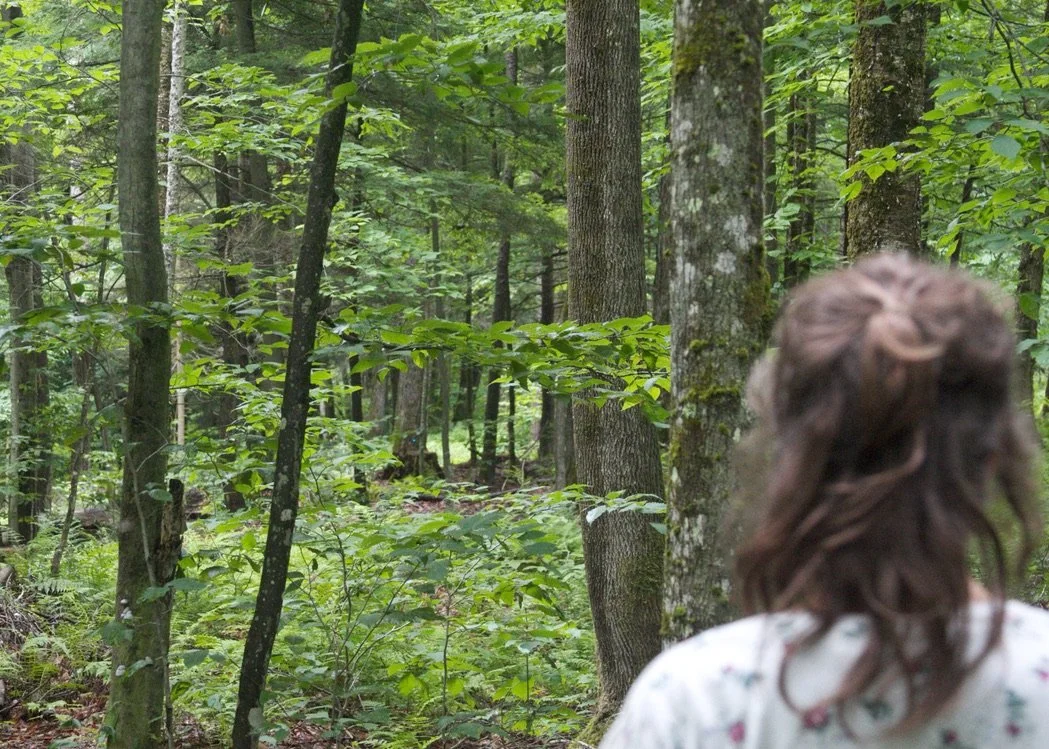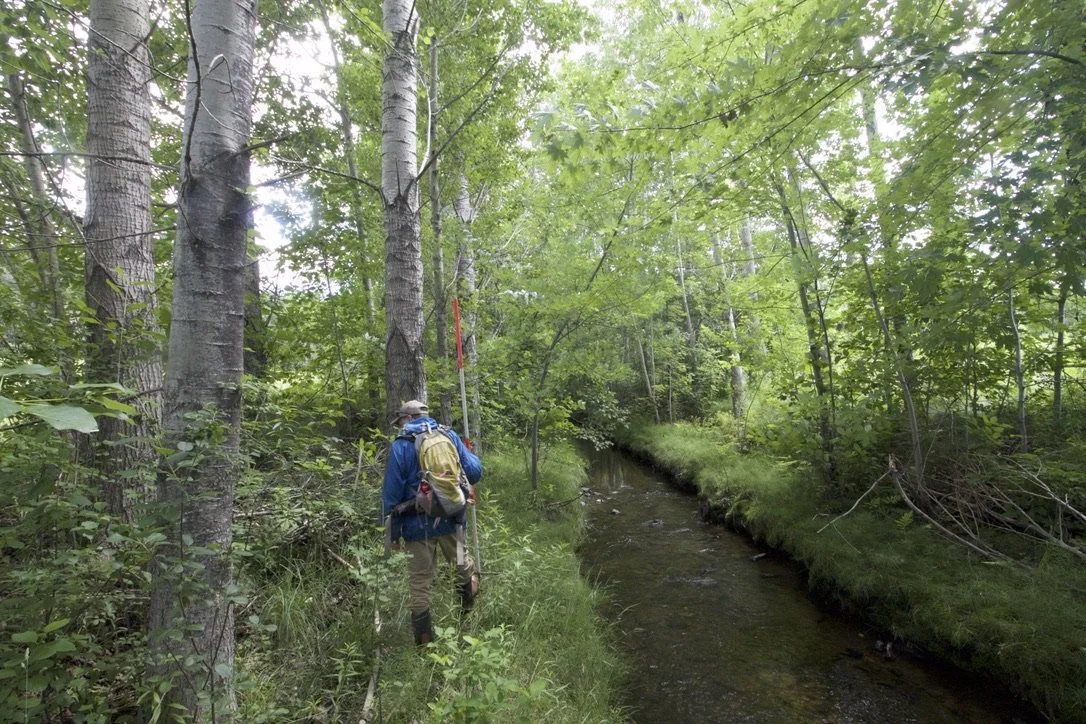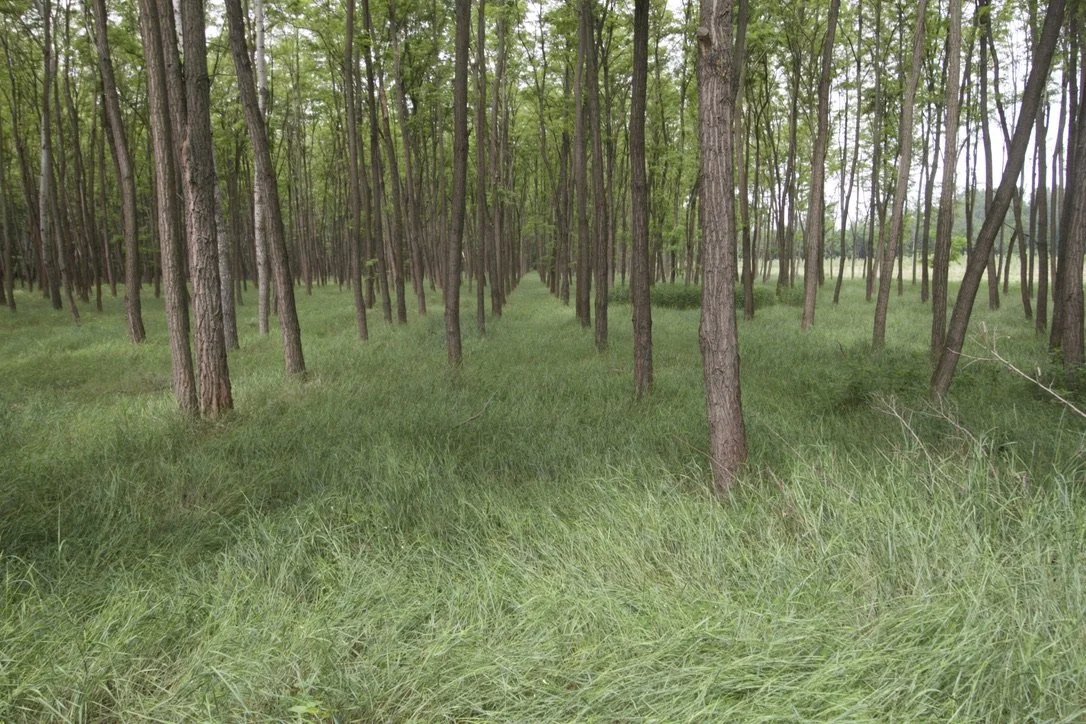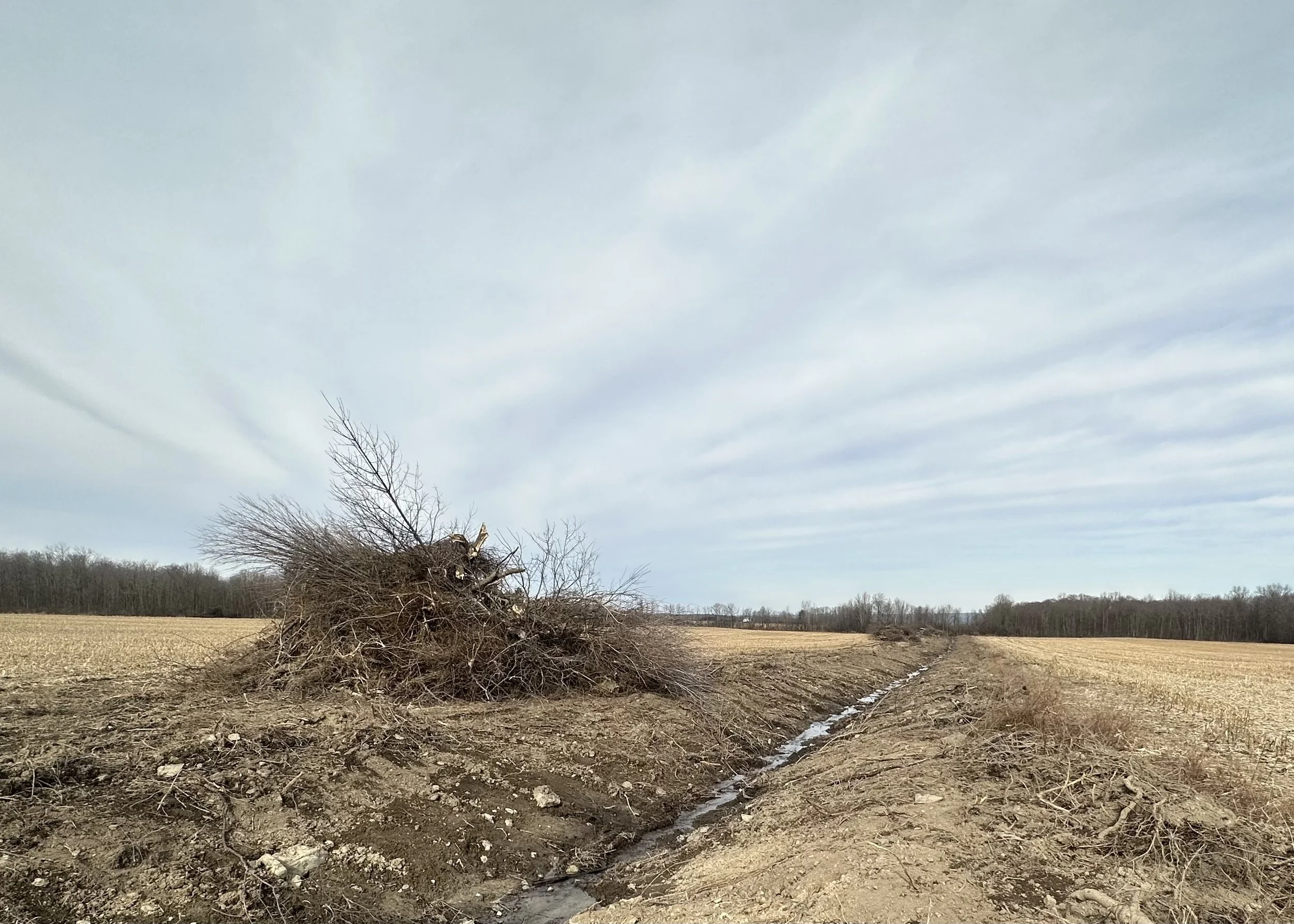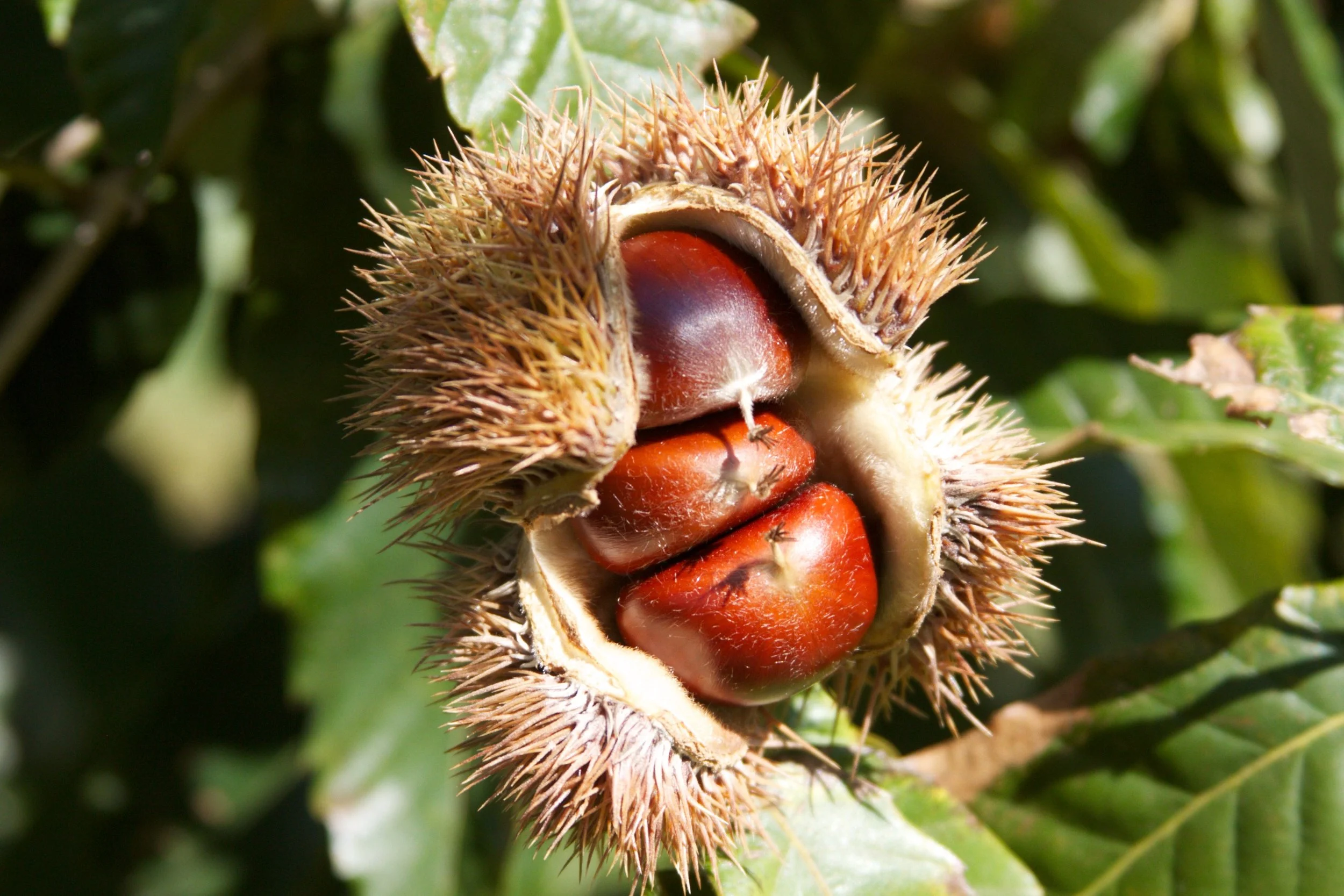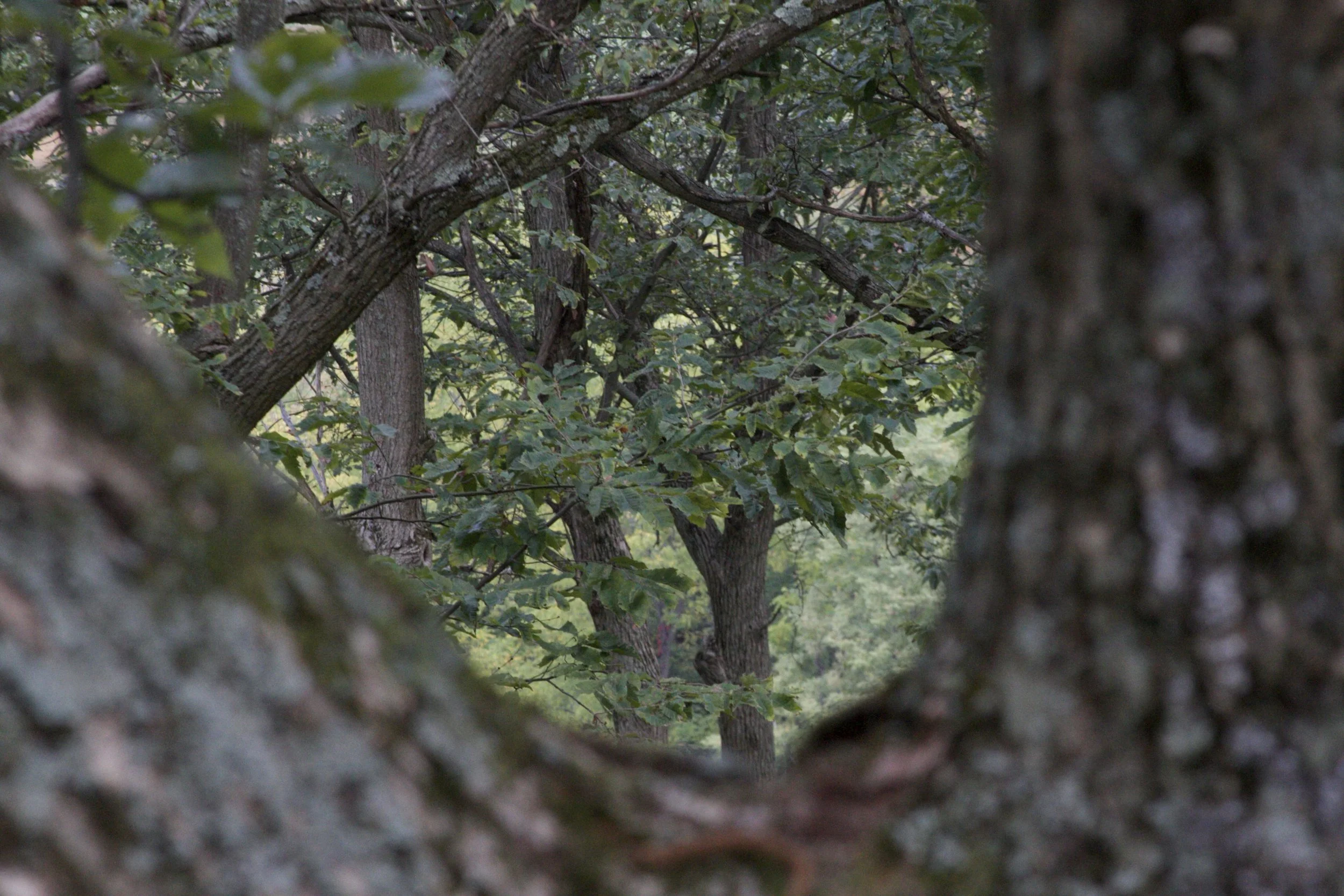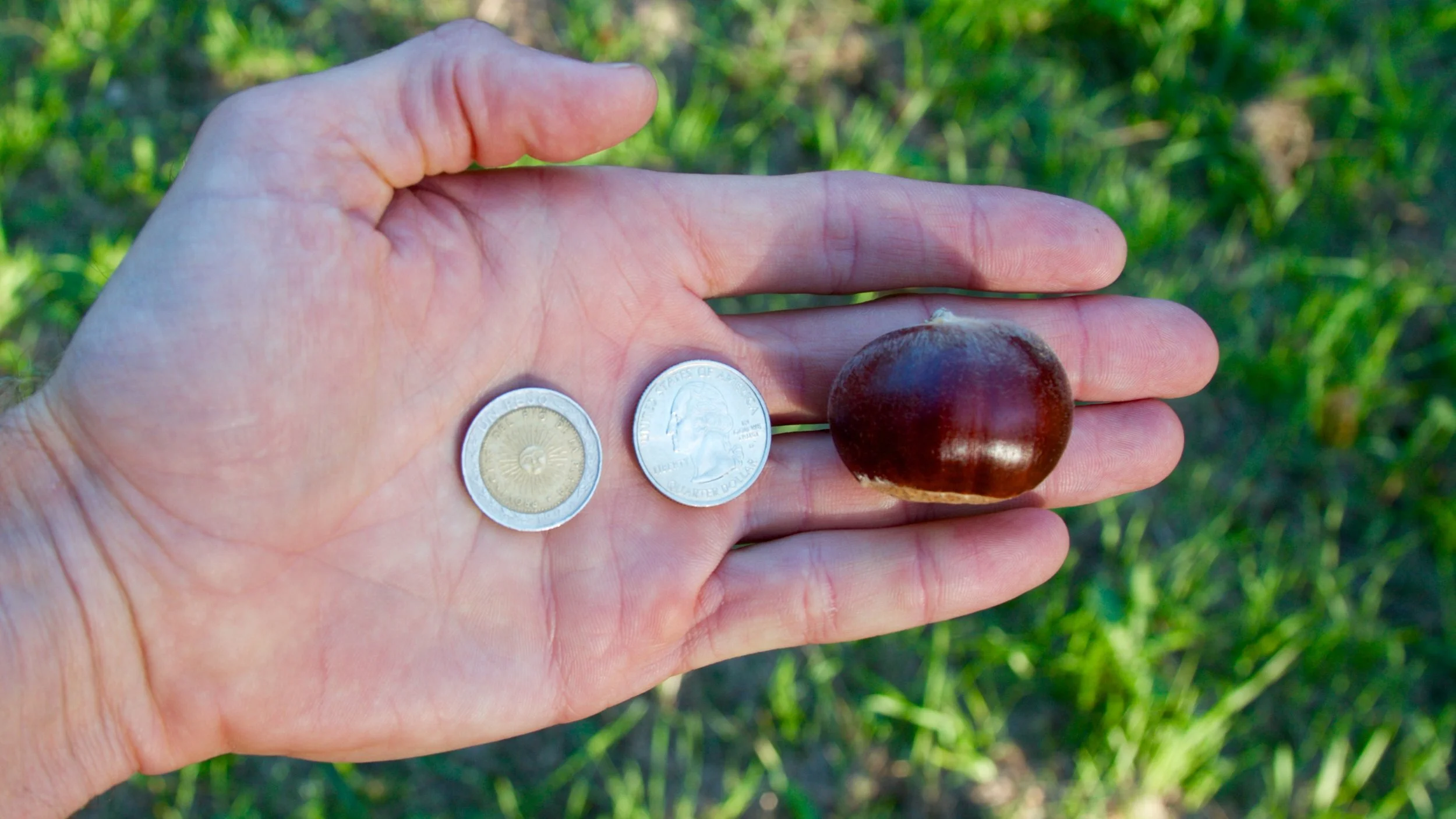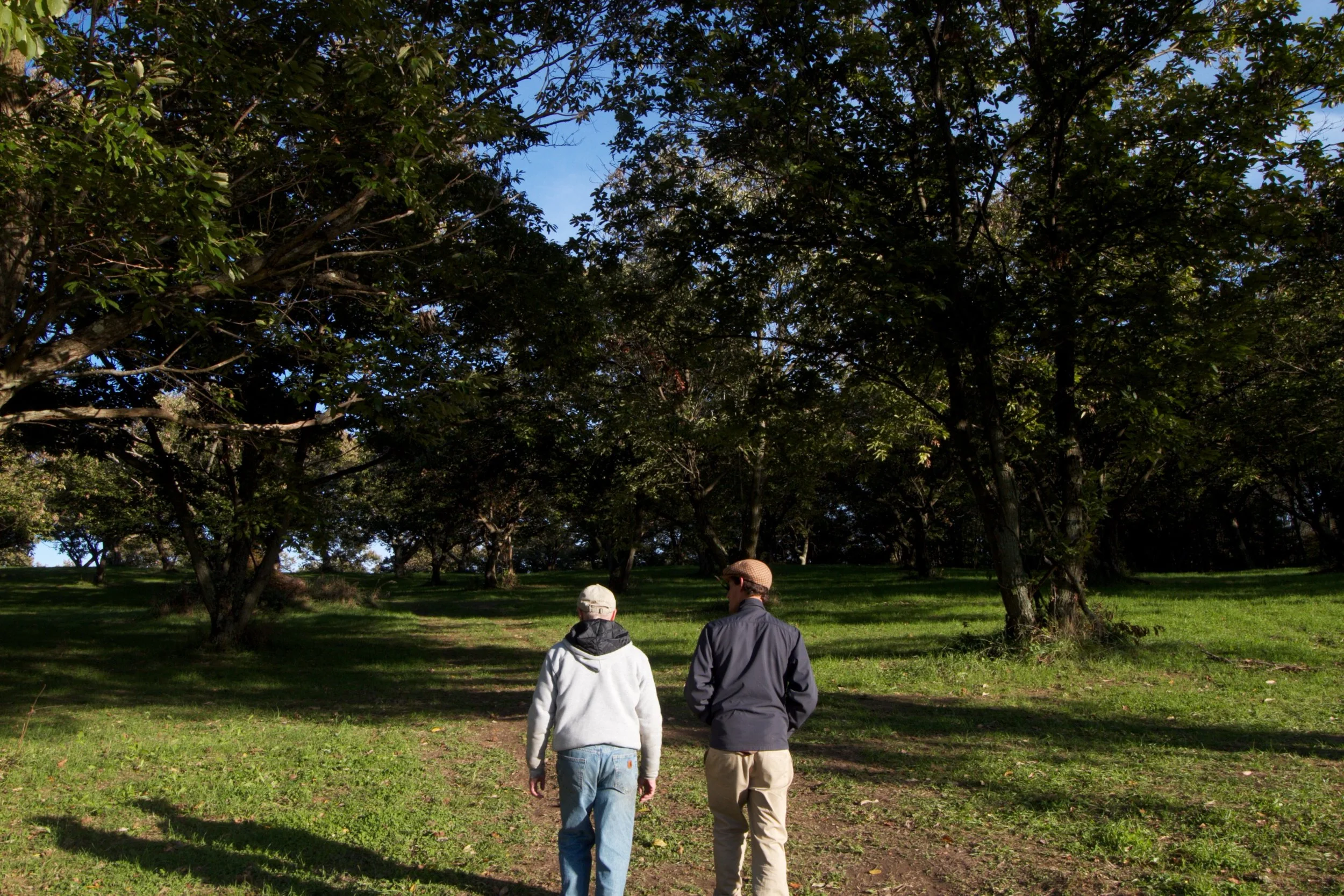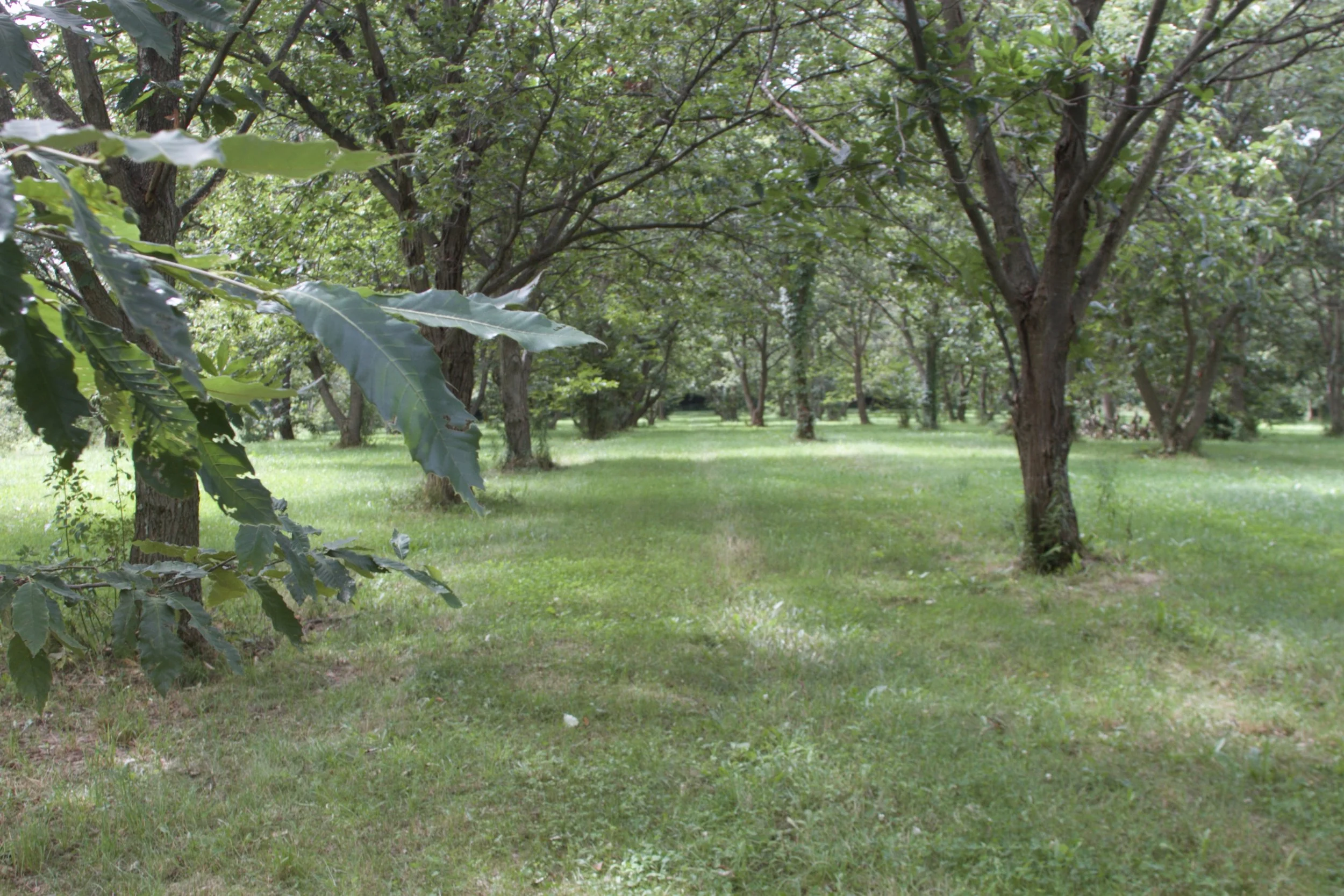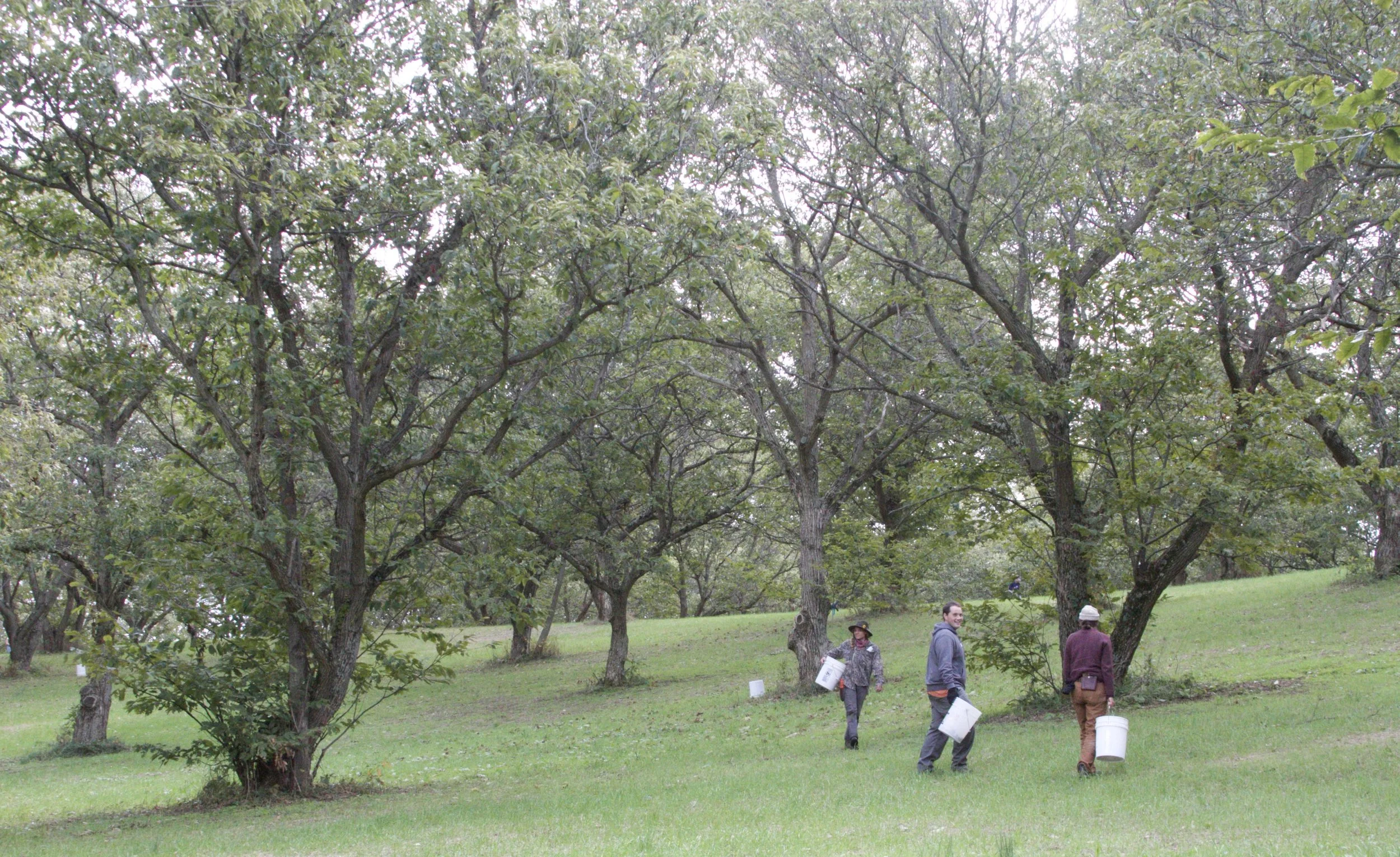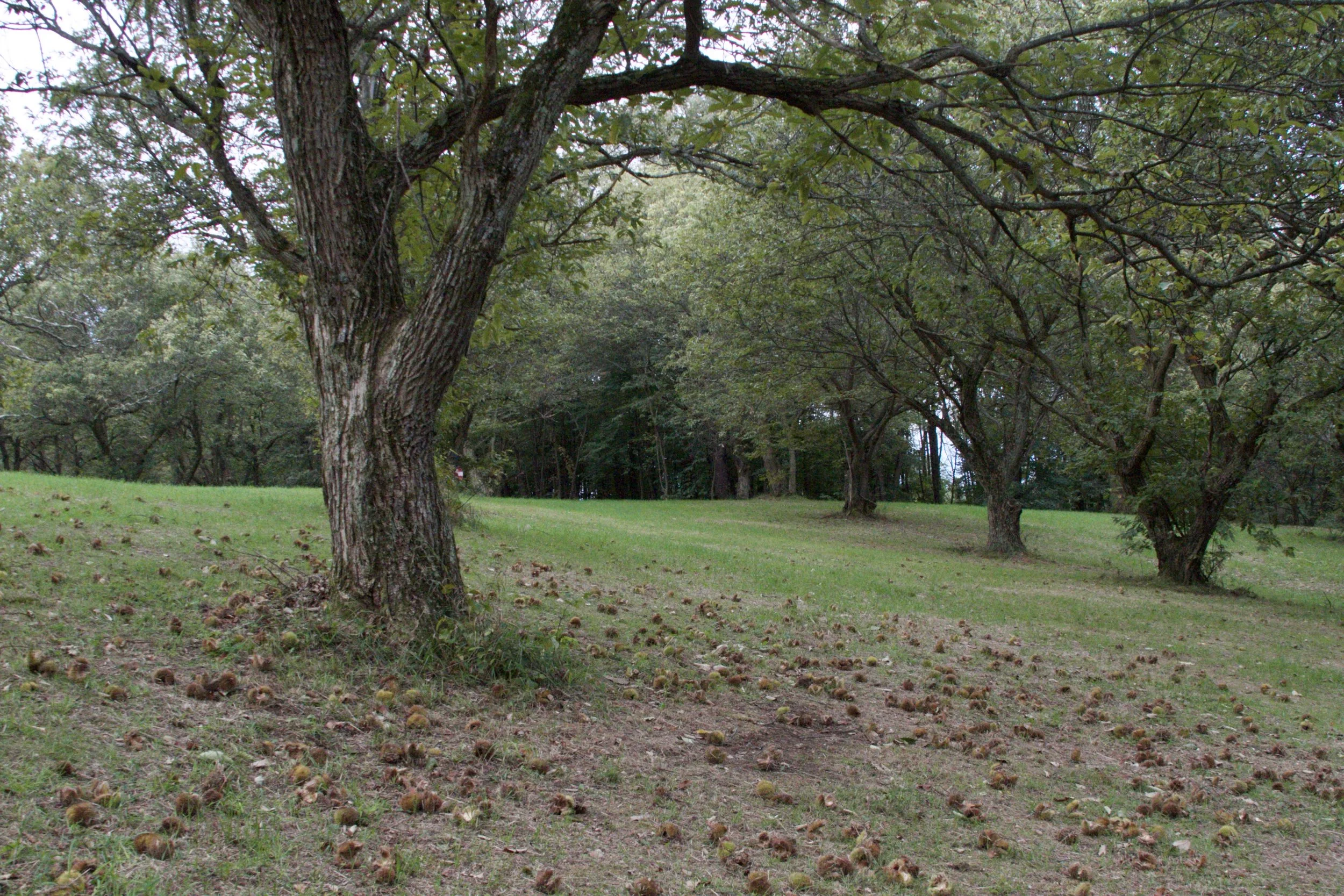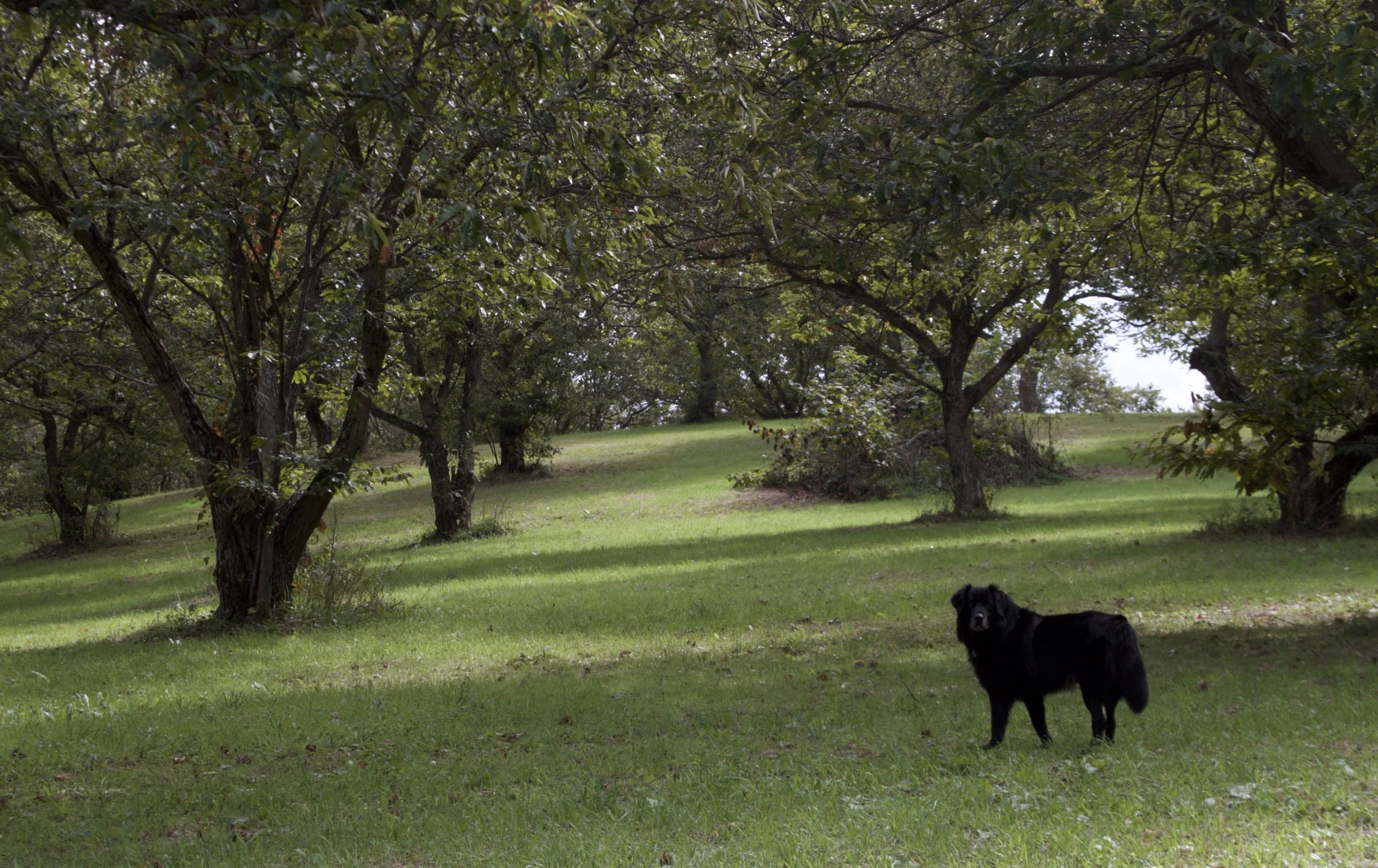Water Quality, Agroforestry, and Chestnuts
The highest-value trees will address water quality first.
Forests produce ecology, but not food. It is well understood that water running out of forests is cleaner than water running off of cropland. The tree canopy reduces the speed of the falling raindrops, the branches dissipating the power of the water before it reaches the ground. The forest floor is covered with decaying leaves and needles. It acts like a sponge, absorbing immense amounts of rainfall. The soil beneath is teaming with roots, fungi, and insects, which all create tunnels that the rain sinks into. The woods are so porous that just 1 acre of parking lot will produce as much flood runoff as 36 acres of forest. Cropland is more permeable than a parking lot, but much less absorbent than a forest. Bare farm fields send their soil into the waterways, clouding the streams and lakes. With the eroded soil comes nitrogen and phosphorus runoff, causing harmful algae to displace the fish and aquatic life downstream. Yet farmland produces our food, and this tradeoff between forests and crops is as old as agriculture itself.
Farming with trees yields clean water and food. Forests provide for the safety of downstream society, and public health. They protect the bounty of our fisheries, and yield the clean water and ecosystem complexity that combat disease. Yet wild, unmanaged forests usually don’t increase food security on a per-acre basis. One acre of corn will feed 3-15 people for a year with polenta, cornbread, chicken and corn-finished beef, whereas one acre of diverse forest might feed 1 person for one year, with nuts, maple syrup, and venison. Notwithstanding, we don’t have to choose between monoculture corn and wildness. The compromise is called agroforestry, or farming with trees. Agroforestry produces food and yields ecosystem services. Between rows of trees or beneath a partial canopy, we can grow crops, cut hay, and graze livestock. But which trees should we plant, and how does this type of farming work?
Chestnuts yield profit and clean waterways. It is only natural that we strive to plant trees that maintain food security, strengthen rural economies, and increase fish and wildlife habitat. However, the trees that do the most for water quality aren’t necessarily the most productive trees for farmers and foresters. Cottonwoods and willows, for instance, work wonders for water quality, but their wood isn’t worth much in the United States, and you certainly can’t eat it. There are many sorts of trees that produce food profitably for farmers, and today we’d like to focus on chestnuts. They taste great, grow relatively quickly, and U.S. consumer demand is outpacing supply.
If we let the land “heal itself,” it returns to thickets of early-successional or non-native trees and shrubs that farmers don’t derive income from, to say the least. Japanese honeysuckle, Chinese privet, European buckthorn, multi-flora rose, and Japanese barberry act as a 30-year pause button on the land succeeding to native hardwood forest. Black locust (Robinia pseudoacacia) is an exception: it is a native pioneer species that produces rot-resistant fence posts and sawlogs that yield market rate returns.
Chestnuts roasting on an open fire? You’ve likely heard Nat King Cole’s iconic voice sing to us from 1945, or perhaps you’ve eaten roasted chestnuts on a street corner in Europe. It turns out that chestnuts are a healthy starch, gluten free, and easy to digest. Historically, chestnuts grew in hill country, and fed the residents of rural Appalachia, Italy, Spain, France, and the Balkans. We can trace chestnut pollen to all Mediterranean lands that the Roman Empire deemed secure. Chestnuts produce enough food to feed 2-3 people per acre, per year, and make for excellent pancakes, breads, and granola. They contain relatively little oil, compared to walnuts and almonds, and are more akin to flavorful potatoes or plantains. We should note that chestnut farmers in the United States do not grow pure American chestnuts (Castanea dentata), given that that species dies of the chestnut blight, and American chestnut restoration is largely a forestry endeavor. Instead, most U.S. chestnut farmers grow Chinese chestnuts (Castanea mollissima), or hybrids thereof. Likewise, Chinese chestnuts are not manufactured products – they are a tree, just like peaches, and both are originally from China.
Chestnuts are a profitable tree crop for U.S. farmers. Top line revenue can reach $15,000 per acre for direct sales, with IRRs in the high teens and breakeven after 8-12 years. Keys to profitability are good site selection, good tree genetics, harvest efficiency, and great marketing. Chestnut trees thrive in well-drained acidic soil, and do not tolerate poor drainage and wet feet. Over the past 30 years, chestnut genetic improvement has taken several leaps thanks to farmers and the University of Missouri. We should not that most chestnut farmers plant seedlings instead of grafted trees, and clonal orchards are uncommon. Harvest costs are coming down, with the imports of mechanized harvesters from Italy and Turkey. Lastly, any observant farmer knows that sale price is the biggest lever on net income, and that good marketing is vital. Farmers and land managers have taken note of the opportunity, and U.S. chestnut acreage has more than doubled in the past 10 years.
Ditch maintenance on many farms consists of ripping all trees and shrubs out with an excavator, pushing the biomass into a pile, and burning it with the assistance of diesel fuel. When farmers don’t derive value from the woody perennials on their land, this is the result. When managed hardwood restoration is not a logistically or financially accessible option, the trees and shrubs that volunteer themselves are treated as a nuisance. Agroforestry, chestnuts, and profitable tree systems provide a third option.
The U.S. chestnut industry finds itself in a unique moment in time. Production costs are diverse, and prices are high. Why is this? When demand outpaces supply, price rises. Said differently: when there is a shortage of a good, producers get to set the price. The current zeitgeist of the U.S. chestnut industry centers on enthusiastic immigrant buyers seeking out farmers and driving hours to hand-harvest their nuts, and chestnut producers selling out 60,000 lbs in 48 hours. Those from East Asian and the Balkans are most prominent. Vans fulls of Korean women and other pockets of chestnut enthusiasm are likely to persist, and as more farmers bring newly-planted chestnut crops to market, the amount of sales and marketing that producers will have to undertake will increase proportionately. The largest barrier to entry in chestnut agroforestry is the time lag to breakeven and the associated capital required to bring an orchard into production. As a result, the chestnut industry should experience a slow evolution, as the trees’ immutable long-term nature inhibits a hemp-like gold rush in agriculture.
Chestnuts are a growth-market crop, like avocados and pistachios were in the 1970’s. They present a potent opportunity for farmland managers to increase net income while improving downstream water quality. The traction in the U.S. chestnut industry is impressive, and we expect hubs to emerge east of Omaha, south of Detroit, and north of Atlanta. Chestnuts in warmer parts of The Great Lakes watershed will be a boon to water quality to the north, mirrored by the Ohio River, Hudson River, Chesapeake Bay to the south.
Propagate’s mission is to establish agroforestry as a cornerstone of agriculture. Registered as a B Corporation, we have rural economies and ecosystem services written into our charter. We manage over 2,000 acres of chestnuts across New York, Kentucky, and Tennessee. If chestnuts seem a good fit for your farm, farmland, or your network, please don’t hesitate to contact us here at Propagate. We offer:
Land Planning Services: Agroforestry Design and Economics, along with Education for the enthusiasts
Chestnuts Trees for Sale: Sourced from the best genetics the U.S. has to offer
Project Development: Site Preparation and Planting

